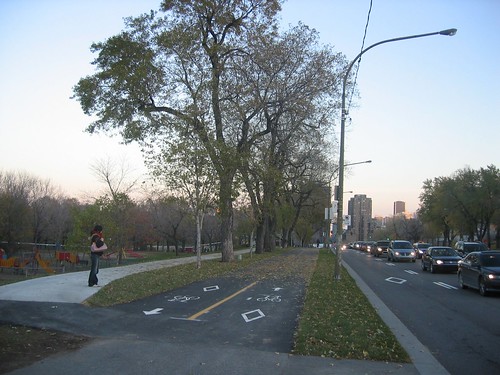This is National Park Week
-- National Park Week website
Through April 24th there is free entry into National Parks that normally charge a fee.
Remember, this year is the 100th anniversary of the creation of the National Parks system.
2. Locally, Rock Creek Park and George Washington Parkway are sponsoring clean up events this Saturday.
-- 8th Annual Rock Creek Exteme Cleanup, Rock Creek Conservancy
-- 2016 Centennial Kick-Off Service Day: George Washington Memorial Parkway.
The Centennial Kick-Off Service Day will be held on Saturday, April 23, 2016 from 8:45 AM to 2:00 PM. The service day will begin with a meet and greet at Daingerfield Island, nestled near the Washington Sailing Marina and Indigo Landing Restaurant. After that, volunteers will depart to prospective service locations along the parkway. Contact: Jacqueline_Cunningham-Davis@nps.gov or call 703-289-2533
3. While I think it's ridiculous that the National Park Service pays for and operates major transportation infrastructure serving DC ("The National Park Service shouldn't be on the hook for basic roadway infrastructure in the Washington Metropolitan Area"), DC has agreed to jointly apply with NPS for a special grant from the US Department of Transportation to fund repair and rehabilitation of the Memorial Bridge ("Park Service makes deadline to apply for Memorial Bridge," Washington Post).
4. Federal Lands Transportation Program. Last December, in response to "Lost opportunity to build cycletrack on Military Road," commenter Tom Quinn raised a very good point about access to many NPS facilities in DC being inadequate, to which I responded, "A gap in planning across agencies: Prioritizing park access for pedestrians, bicyclists and transit users compared to motor vehicle access.
He writes:There are a variety of programs that support transportation access to national parks and other federal lands, but most of the funding goes to big "natural" parks, not urban parks. The Federal Lands Access Program provides funding for smaller projects. Every state gets some funding through this program. In DC it's not very much money, about $1.3 million, but it is something. A plan to systematically address major access issues should developed and these funds tapped to address them.
What Richard left out of the piece is that the Upper reaches of Rock Creek Park are mostly accessible now via automobile which is ridiculous and terrible policy so a bike lane on Military (or Broad Branch) is not just about creating an East-West bike path but also about improving access to RCP which is great for recreational use but also for commuting to points south.
He is absolutely right. The issue is bigger than better east-west access, a cycletrack on Military Road would also make the park more accessible more generally, and is representative of a broader, structural failure to ensure convenient access to the city's parks for pedestrians, bicyclists, and by extension transit users.
Parc Avenue cycle path, Montreal

South side of Military Road in Rock Creek Park.
5. Tonight is the launch of the Rock Creek East II Livability Study process. The meeting will be from 6pm to 8pm at the Petworth Neighborhood Library (Kansas and Georgia Avenues NW).
Livability studies are performed by the DC Department of Transportation and focus on transportation-based community improvements. From the webpage:
Livability sounds like a buzzword; but it is a big idea. DDOT is taking up the challenge and making it a goal to translate that idea into actual actions. Outcomes will be aimed at on the ground changes such as enhanced pedestrian crossings, more accessible bus stops, geometric adjustments that support intersection safety, increased green spaces, attractive streetscapes, signage for better driver information, updates to traffic signal timing, and speed controls in sensitive areas.The northernmost boundary of the study area is the south side of Military Road, including most of the area where I aver a cycletrack should have been constructed. I may go just to raise this issue.
6. Recapping my previous discussions on local, regional, and state parks planning efforts with regard to federal lands:
Generally, "Local" parks master plans usually fail to address matters concerning county, state, and federal parks within their jurisdictions. In terms of my thinking about parks planning and potential conflict between agencies and jurisdictions, the situation in DC is one of the primary reasons I argue that "local parks master plans" need to provide guidance and contingency planning for all the major parks and open spaces within its jurisdiction, regardless of who owns and operates a particular park, because otherwise, local resident-citizen needs and input can be significantly underrepresented.
If the local government won't represent citizen interests, too often, neither will anyone else.
These past blog entries discuss the issue of parks planning in the context of parks controlled by other agencies but located within cities and counties:
-- "How surveys based on gross data can be very misleading: DC and parks" (this piece discusses the issue in terms of a framework and is a response to how surveys using gross data over-rate DC's park situation)
-- "Federal shutdown as another example of why local jurisdictions should have more robust contingency and master planning processes"
-- "Parks issues"
-- "National Parks Week"
-- "Local parks planning, the USDA's National Arboretum, and the Friends of the National Arboretum"
Note that the reason this occurs is because plans are usually more kind of "asset management" programs for particular agencies, rather than broader topic/theme-based plans covering a subject area comprehensively and creatively. Plus, agencies don't like putting in plans recommendations for agencies "above" them, like state or federal agencies.
Labels: capital planning and budgeting, civic assets, civic engagement, cultural planning, parks planning, public realm framework, transportation planning, urban design/placemaking






1 Comments:
Forgot about the trademark dispute:
https://www.nps.gov/yose/learn/news/yosemite-national-park-to-change-historic-property-names.htm
Should have mentioned the diversity issue:
http://www.usatoday.com/story/news/nation/2016/04/19/national-parks-looking-young-diverse-visitors/83235694/
Branding issues.
Dog parks (in SF).
http://kron4.com/2016/04/06/groups-fighting-golden-gate-national-recreation-area-dog-restrictions-sue-to-force-park-service-to-release-data/
Post a Comment
<< Home